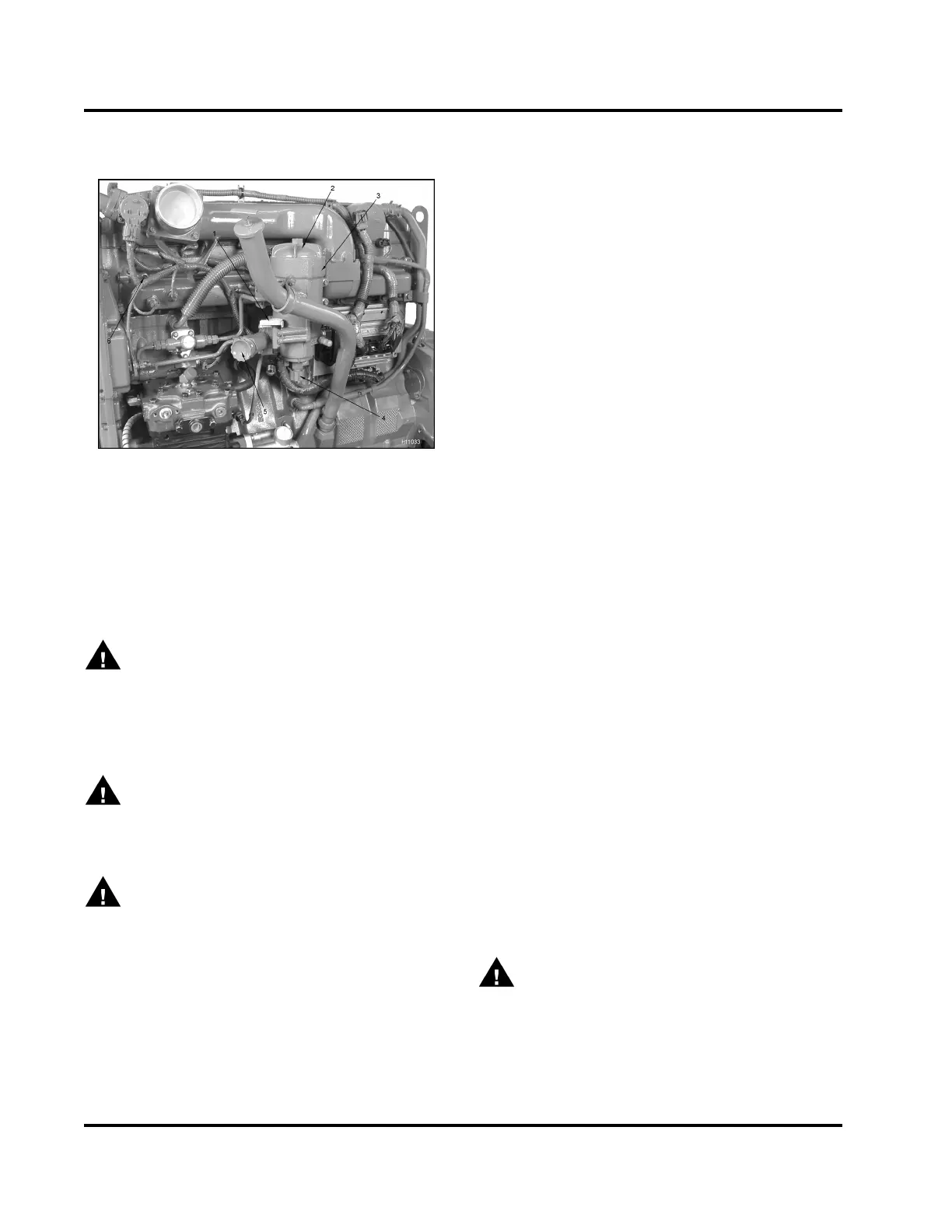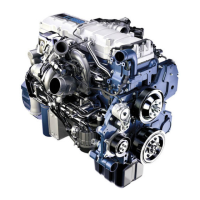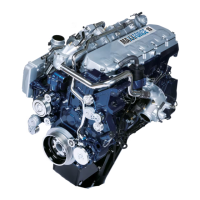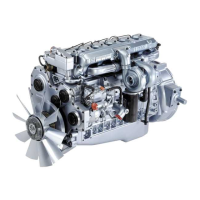132 4 ENGINE SYMPTOMS DIAGNOSTICS
Priming Fuel System
Figure 159 Fuel system components
1. Water dra in valve
2. Fuel filter cover
3. Fuel filter header
4. D rain valve (fuel)
5. Fuel primer pump assembly
6. Fuel Pressure Test Valve
WARNING: To avoid personal injury,
possible death or damage to the engine or vehicle,
make sure the transmission is in neutral, parking
brake is set and wheels are blocked before doing
diagnostic or service procedures on engine or
vehicle.
WARNING: To avoid serious personal injury
or possible death, make sure that the engine has
cooled down sufficiently before attempting to
prime the fuel system.
WARNING: To avoid serious personal injury
or possible death: do not allow engine fuel to
stay on your skin. Clean your skin and nails with
soap and water, or a good hand cleaner. Wash or
properly throw away clothing or rags containing
used engine fuel. Used engine fuel contains
certain elements that may be unhealthy for skin.
CAUTION: Do not add fuel to the fuel filter header.
This can add contaminates to the fuel.
Tools
• Fuel Pressure Gauge
• Fuel pressure test adapter
• Fuel Test Fitting
• Fuel/Oil Pressure Test Coupler
• 1to5gallonbucket
If the engine runs ou t of fuel, do the following:
1. Set parking brake and place transmission control
lever to NEUTRAL or PARK.
2. Verify that there is at least 15 liters to 19 liters (4
gallons to 5 gallons) of fuel in the tank.
NOTE: If your vehicle is equipped with dual fuel tanks,
fill each tank w ith 15 liters to 19 liters (4 gallons to 5
gallons) of fue l.
3. Unlock the fuel primer pump assembly by turning
the knob counter-clockwise.
4. Fill the fuel filter header and fuel rail by pumping
the fuel primer pump.
5. Pump the system until enough pressure is built
up. Typically, 20 to 30 pumps will b uild enough
pressure. At this point, the pump plunger will
become difficult to pump. Make sure the pump
plunger is pushed in when finished. It is not
necessary to lock the fuel primer knob at this
time.
• If the pump is working correctly and the
pressure is built up , do step 11.
• If the pump plunger does not pump on the
first attempt, the f ue l system may be fu ll of
compressed air. Do step 6.
• If little pressure is felt after pushing the knob
of the fuel primer pum p s everal times, a ir must
be bled from the fuel rail. Do step 8.
WARNING: To avoid serious personal injury
or possible death, wear safety glasses with side
shields when performing the following procedure.
EGES-270-1
Read all safety instructions in the "Safety Information" section of this manual before doing any procedures.
Follow all warnings, cautions, and notes.
© August 2008 Navistar, Inc.

